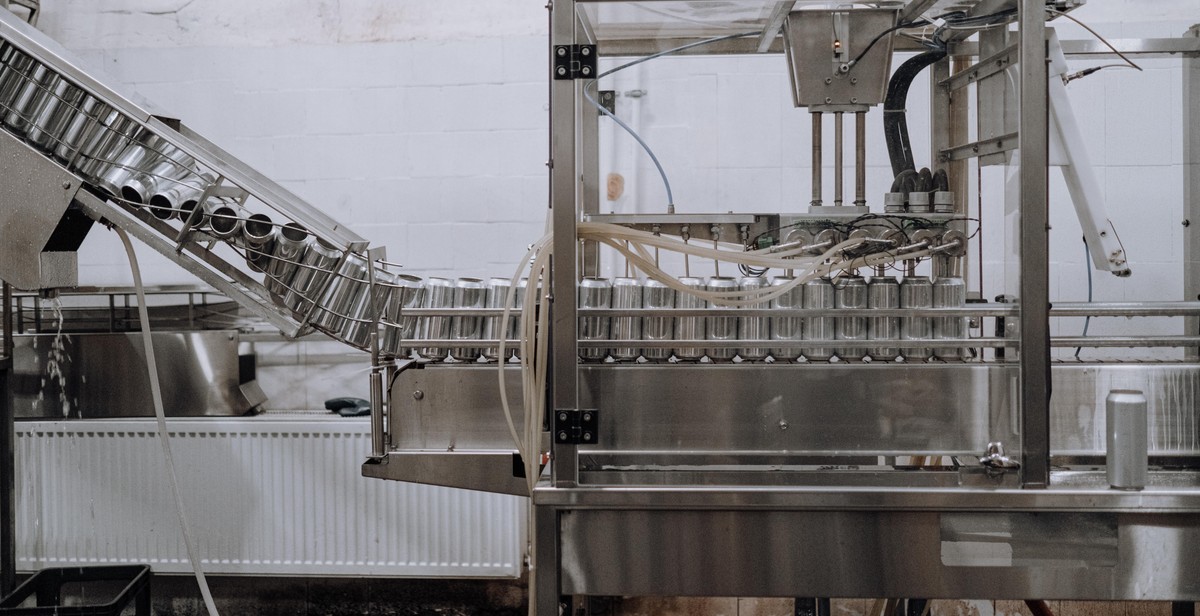Robotic Process Automation: Transforming the Corporate World
In today’s rapidly evolving digital landscape, businesses are constantly seeking innovative solutions to streamline their operations, reduce costs, and enhance productivity. One such groundbreaking technology that has captured the attention of organizations worldwide is Robotic Process Automation (RPA).
RPA is a game-changing technology that utilizes software robots or “bots” to automate repetitive and rule-based tasks, enabling businesses to achieve higher efficiency and accuracy in their processes. These bots are designed to mimic human actions, interacting with various systems and applications to perform tasks such as data entry, data extraction, generating reports, and much more.
With RPA, organizations can eliminate the need for manual intervention in mundane and time-consuming tasks, freeing up employees to focus on more strategic and value-added activities. This not only improves overall productivity but also enhances employee satisfaction and morale.
Furthermore, RPA offers unparalleled scalability and flexibility, allowing businesses to easily adapt and scale their automation efforts as per their requirements. It integrates seamlessly with existing systems and applications, eliminating the need for costly and time-consuming system upgrades.
By implementing RPA, organizations can achieve significant cost savings, improved accuracy, reduced processing times, and enhanced customer experiences. From finance and accounting to human resources and customer service, RPA has the potential to transform various departments across the corporate world.
In this article, we will delve deeper into the various benefits and applications of RPA, exploring how this transformative technology is reshaping the corporate landscape and revolutionizing the way businesses operate.

What is Robotic Process Automation?
Robotic Process Automation (RPA) is a cutting-edge technology that has gained significant attention in recent years for its ability to revolutionize business processes. RPA refers to the use of software robots or bots to automate repetitive, rule-based tasks that were traditionally performed by humans. These bots are designed to mimic human actions and interact with digital systems and applications just like a human employee would.
RPA has the potential to transform the corporate world by streamlining operations, reducing costs, and improving efficiency. By automating routine tasks, RPA frees up human employees to focus on more strategic and value-added activities, driving innovation and growth.
RPA is characterized by its key features, such as:
- Scalability: RPA bots can be easily scaled up or down based on business needs, allowing organizations to adapt to changing workloads.
- Accuracy: RPA bots perform tasks with a high level of accuracy, minimizing errors and improving data quality.
- Speed: RPA bots work at a significantly faster pace than humans, enabling organizations to complete tasks in a fraction of the time.
- Integration: RPA can seamlessly integrate with existing systems and applications, eliminating the need for complex and costly system upgrades.
RPA can be applied across various industries and functions, including finance, human resources, customer service, supply chain management, and more. It can automate processes such as data entry, invoice processing, report generation, customer onboarding, and many others.
Overall, RPA offers organizations a competitive edge by enabling them to achieve operational excellence, enhance customer experience, and drive digital transformation.

Benefits of Robotic Process Automation
Robotic Process Automation (RPA) has emerged as a game-changer in the corporate world, revolutionizing the way businesses operate. By automating repetitive and mundane tasks, RPA technology offers numerous benefits that enhance efficiency, reduce costs, improve accuracy, and elevate the overall customer experience.
Increased Efficiency and Productivity
One of the key advantages of RPA is its ability to streamline business processes, resulting in increased efficiency and productivity. By automating repetitive tasks, employees can focus on more strategic and value-added activities, driving productivity gains and enabling faster turnaround times.
Cost Reduction
RPA eliminates the need for manual labor, reducing costs associated with human errors, training, and employee turnover. By automating tasks, businesses can optimize resource allocation and achieve significant cost savings in the long run.
Improved Accuracy and Quality
Robots are programmed to follow predefined rules and guidelines, ensuring consistent and error-free execution of tasks. With RPA, businesses can minimize errors, improve data accuracy, and enhance overall process quality, leading to better decision-making and reduced rework.
Enhanced Customer Experience
RPA enables businesses to deliver exceptional customer experiences by automating customer-facing processes. With faster response times, streamlined workflows, and personalized interactions, businesses can exceed customer expectations, enhance satisfaction, and build long-term loyalty.
Scalability and Flexibility
RPA offers scalability and flexibility to adapt to changing business needs. As processes can be easily automated and replicated, businesses can scale their operations without the need for significant investments in additional resources. RPA also allows for easy customization and integration with existing systems, ensuring seamless compatibility and adaptability.

Use Cases of Robotic Process Automation
Data Entry and Processing
Robotic Process Automation (RPA) has revolutionized the way businesses handle data entry and processing tasks. By automating repetitive and rule-based activities, RPA bots can extract data from various sources, validate and cleanse it, and enter it into the appropriate systems or databases. This significantly reduces errors and improves data accuracy and efficiency.
Customer Support and Service
RPA can streamline customer support and service processes by automating tasks such as ticket routing, data retrieval, and response generation. Bots can access customer information, analyze patterns, and provide personalized responses, enhancing customer experience and satisfaction. Additionally, RPA can handle routine inquiries, freeing up human agents to focus on more complex customer issues.
Financial and Accounting Processes
RPA is highly effective in automating financial and accounting processes, such as invoice processing, accounts payable/receivable, and financial reporting. Bots can extract data from invoices, validate it against predefined rules, and update accounting systems, eliminating manual errors and reducing processing time. RPA also enables automatic generation of financial reports, saving valuable time for finance teams.
Human Resources
RPA can streamline various human resources (HR) processes, including employee onboarding, payroll processing, and leave management. Bots can automate data entry, perform background checks, and generate employment contracts, ensuring a seamless onboarding experience. Additionally, RPA can calculate and process payroll, track employee attendance, and manage leave requests, improving HR efficiency and accuracy.
Supply Chain Management
RPA can optimize supply chain management by automating tasks such as order processing, inventory management, and supplier communication. Bots can extract order details, update inventory systems, and trigger alerts for low stock levels. They can also reconcile purchase orders and invoices, ensuring accuracy and reducing discrepancies. RPA improves supply chain visibility, reduces manual effort, and enhances overall operational efficiency.

Challenges and Limitations
Despite the numerous benefits that Robotic Process Automation (RPA) brings to the corporate world, there are several challenges and limitations that organizations need to consider before implementing this technology.
1. Complex Implementations
One of the major challenges in adopting RPA is the complexity involved in its implementation. Implementing RPA solutions requires a deep understanding of existing business processes and systems. Identifying which tasks are suitable for automation and integrating the software with legacy systems can be a daunting task. Organizations need to invest significant time and resources to ensure a smooth and successful implementation.
2. Security and Privacy Concerns
As RPA involves handling sensitive data and performing critical tasks, security and privacy concerns are a top priority. Organizations must ensure that their RPA systems are secure and compliant with data protection regulations. Unauthorized access, data breaches, and potential errors in automation can pose significant risks. Implementing robust security measures and regularly monitoring the RPA system is crucial to mitigate these concerns.
3. Lack of Technical Expertise
Another limitation is the scarcity of technical expertise in RPA. Implementing and managing RPA solutions require skilled professionals who understand the intricacies of the technology. However, there is a shortage of professionals with the necessary knowledge and experience in RPA development and maintenance. Organizations may face challenges in finding and retaining qualified RPA experts, leading to delays and inefficiencies in the implementation process.
4. Resistance to Change
Resistance to change is a common challenge when introducing any new technology, and RPA is no exception. Employees may be resistant to adopting RPA due to fear of job loss or lack of understanding about the benefits it brings. Organizations need to address these concerns through effective change management strategies, including communication, training, and involving employees in the implementation process.
Despite these challenges, organizations can overcome them by proactively addressing each limitation. By investing in thorough planning, robust security measures, training programs, and effective change management, organizations can successfully leverage the transformative power of RPA in the corporate world.

Future Trends and Predictions
As Robotic Process Automation (RPA) continues to evolve, we can expect several future trends and predictions that will shape the corporate world. These advancements in RPA technology will revolutionize the way businesses operate and transform various industries. Here are some key trends to watch out for:
1. Intelligent Automation
The future of RPA lies in the integration of artificial intelligence (AI) and machine learning (ML) capabilities. Intelligent automation will enable robots to perform complex tasks that require cognitive abilities, such as natural language processing and decision-making. This will significantly enhance the efficiency and accuracy of business processes, leading to higher productivity and cost savings.
2. Hyperautomation
Hyperautomation is the integration of RPA with other automation technologies, such as process mining, analytics, and workflow management. This holistic approach will enable end-to-end automation of entire business processes, eliminating manual intervention and streamlining operations. With hyperautomation, organizations can achieve greater agility, scalability, and operational excellence.
3. Cloud-based RPA
The future of RPA will see a shift towards cloud-based solutions. Cloud-based RPA offers several advantages, including scalability, flexibility, and cost-effectiveness. It allows businesses to easily scale their automation initiatives, access advanced analytics, and leverage AI capabilities without significant infrastructure investments. Cloud-based RPA will become the preferred choice for organizations looking to accelerate their digital transformation journeys.
4. Collaborative Robotics
Collaborative robots, also known as cobots, will play a significant role in the future of RPA. These robots can work alongside humans, assisting them in repetitive or physically demanding tasks. Cobots offer a safer and more efficient working environment, enabling humans and robots to collaborate seamlessly. This collaborative approach will redefine job roles and create new opportunities for human-robot collaboration.
In conclusion, the future of RPA is bright and promising. With intelligent automation, hyperautomation, cloud-based solutions, and collaborative robotics, RPA will continue to transform the corporate world, driving innovation, efficiency, and competitive advantage.

Conclusion
In conclusion, robotic process automation (RPA) is revolutionizing the corporate world by streamlining operations, improving efficiency, and reducing costs. With its ability to automate repetitive and rule-based tasks, RPA allows businesses to focus on more strategic and value-added activities.
By implementing RPA, organizations can achieve remarkable results such as increased productivity, enhanced accuracy, and improved customer satisfaction. RPA also enables businesses to scale their operations without significant investments in hiring and training additional staff.
Furthermore, RPA provides a competitive advantage by accelerating processes, reducing errors, and ensuring compliance with regulations. It allows companies to adapt quickly to changing market conditions, stay ahead of the competition, and deliver better products and services to their customers.
However, successful implementation of RPA requires careful planning, thorough analysis of existing processes, and collaboration between business and IT teams. It is essential to identify the right processes for automation, select the appropriate RPA tools, and ensure seamless integration with existing systems.
As the technology continues to evolve, RPA is expected to become even more sophisticated, incorporating artificial intelligence (AI) and machine learning capabilities. This will enable RPA to handle complex tasks and make intelligent decisions, further transforming the corporate world.
In conclusion, embracing RPA can lead to significant improvements in operational efficiency, cost reduction, and overall business performance. Organizations that embrace this transformative technology will be better positioned to thrive in the digital age.
